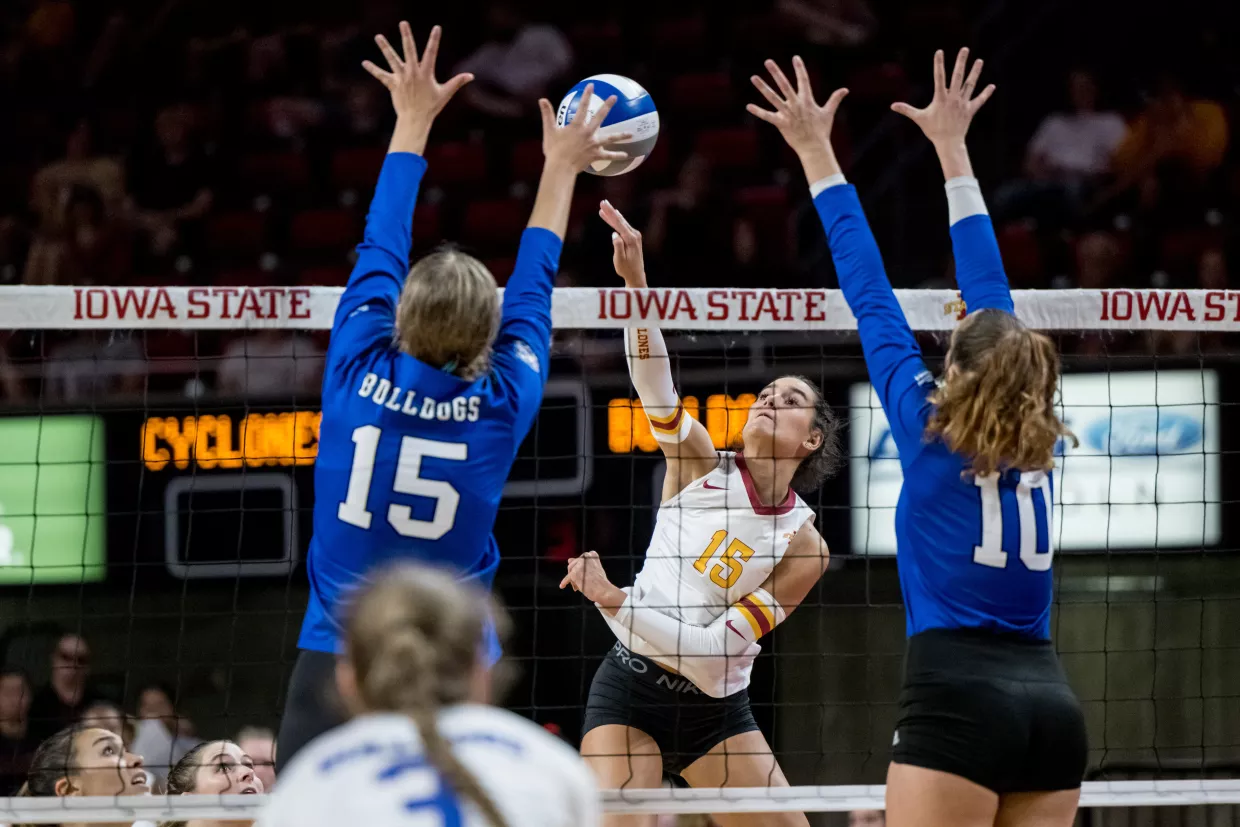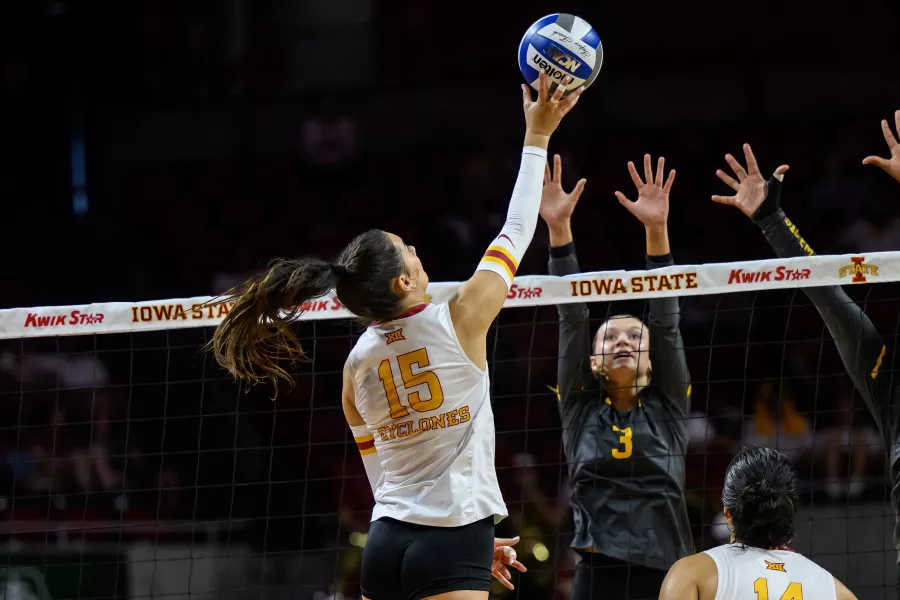Set up for success: How surgery helped a college volleyball player become pain-free
After being diagnosed with a mysterious and painful condition, an Iowa State athlete quickly got back on the court following a specialized procedure.

Entering the world of collegiate sports can be a big leap for any athlete. But for Iowa State University volleyball player Kiersten Schmitt, those challenges were magnified by a mysterious and excruciating condition in her calves that prevented her from playing at full force during her freshman season.
The pain had dogged the 18-year-old through high school, but college-level training brought the problem—and Schmitt’s awareness of it—to a new level of intensity.
“It was a sharp, stabbing pain, and it really hurt when I was training,” says Schmitt, who is from Epworth, Iowa. “At points, the pain was so bad that I was crying and couldn’t walk. And then two hours later, I would be perfectly fine.”
The pain limited her ability to train and compete.
“I would barely practice for any sports that I played because I was in so much pain. At the college level, I couldn’t expect to sit out during practice and then be able to play in a game,” Schmitt says. “I was just so scared and wanted to finally play without pain.”
Fortunately, a teammate pointed Schmitt toward Mederic Hall, MD, a sports medicine physician with University of Iowa Health Care who had previously treated this teammate. Combining innovative, hard-to-find testing with highly specialized expertise in sports medicine, Hall was able to pinpoint Schmitt’s diagnosis as chronic exertional compartment syndrome.
“Four years ago, I was seeing everyone in the books, and nobody knew what was wrong with me,” Schmitt says. “But as soon as I went to the University of Iowa, they identified it as compartment syndrome.”
The condition usually occurs in athletes or other highly active people and causes pressure within certain muscle groups to rise dramatically with exertion, decreasing blood flow, and leading to pain and nerve dysfunction.
“This problem often gets misdiagnosed or isn’t diagnosed for a long time because it’s not overly common,” explains Hall. “But we see a lot of these folks from around the state and country because we have the expertise and ability to do the testing.”

Don’t miss the action
Receive expert athlete care to get back playing the sports you love.
New sports medicine techniques lead to faster, easier recoveries
UI Health Care offers new, minimally invasive surgical techniques that treat chronic exertional compartment syndrome and other sports-related conditions—eliminating large incisions and long recoveries that typically hamper sports surgeries.
“This less invasive technique is offered at few programs throughout the country,” Hall says. “It requires a highly specialized physician skill set and advanced ultrasound imaging equipment.”
In November 2022, Hall performed an ultrasound-guided fasciotomy on Schmitt’s lower legs, using the imaging equipment to view thin connective tissue—called fascia—that surrounds muscles. He then pierced and released the fascia with a surgical instrument, allowing the muscles to expand properly.
· No operating room necessary
· No overnight hospital stay
· Local anesthesia
· Tiny incisions
· Quick recover
“After the surgery, I stood up from the operating table, got crutches, and walked out,” Schmitt says.
Within weeks, the athletic training staff at Iowa State had her on the court, gradually ramping up her activity to prepare her for the volleyball season.
“We were able to give her a firm diagnosis and offer her a new, cutting-edge treatment that allowed her to quickly return to play,” Hall says.
After having surgery in November, Schmitt was fully cleared to return to volleyball by the following April.
“Now that I’m without pain, I’m having fun playing sports again,” she says. “For about four years of my life, I suffered with this undiagnosed injury. I’m so grateful to the University of Iowa sports medicine team and Dr. Hall for everything they’ve done for me because I can now say that I’ve been through two seasons and haven’t had any pain.”
A fast return to playing sports
Hall says UI Health Care can make a huge difference in the diagnosis and recovery for other athletes—or even those whose jobs or activity levels predispose them to various orthopedic injuries or pain.
“Overall, these patients are very happy to undergo less-invasive procedures that require less post-procedure pain management,” he says. “Having tiny incisions and not having a large, obvious scar in a conspicuous place definitely holds value for many of our patients.”
Schmitt says she’s now playing better than ever.
“I can last a full two-hour practice five days a week and not have any pain,” she says. “I'm getting more consistent since I'm able to play more and do all these different drills. I'm improving on the court a lot.”
As a sign of her progress, she points to a spring game this season when her team played Minnesota.
“My coaches told me I was the best player on the court,” Schmitt says. “It was really cool to play high-level volleyball against a really great program and team. When your coaches tell you things like they’re so proud of you, that you played amazing, it’s really exciting.”
Photo credit: Iowa State Athletics